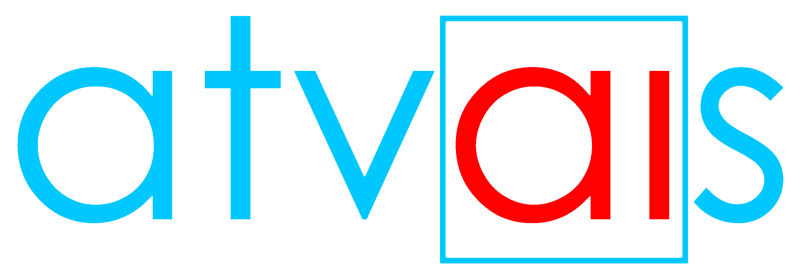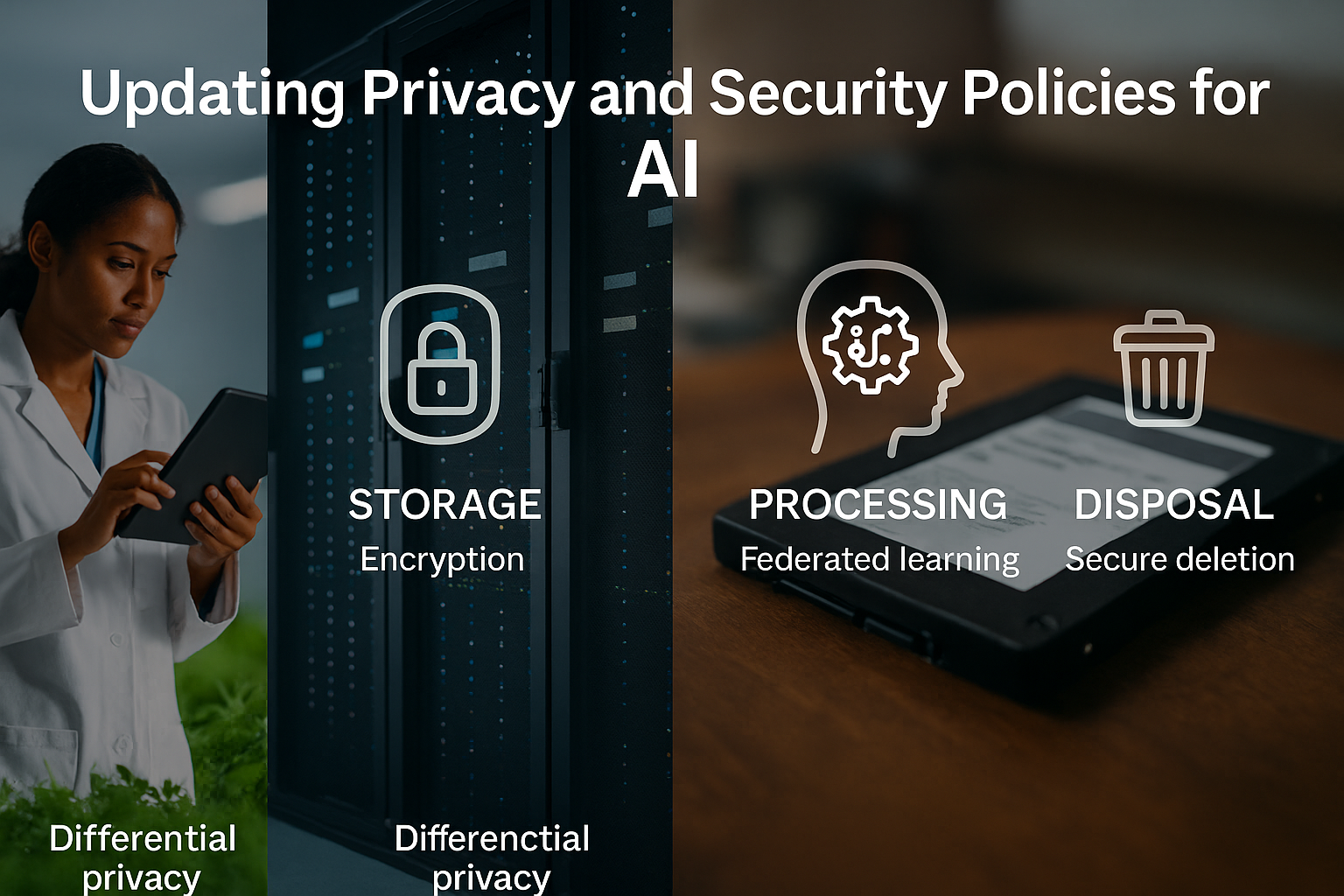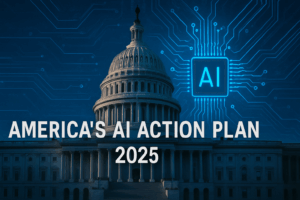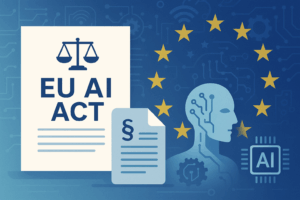As artificial intelligence becomes central to modern business operations, it challenges traditional approaches to privacy and data protection. Most existing policies were not designed for systems that depend on large-scale data processing, adaptive algorithms, and opaque decision-making logic. Updating policies is key.
AI also introduces new vulnerabilities—such as model inversion or data poisoning—that attackers can exploit. To manage these risks, organizations must update their privacy and security policies for AI, aligning them with emerging standards and regulatory developments like the EU AI Act and NIST’s AI Risk Management Framework.
Assessing Gaps in Current Privacy Policies
Outdated privacy frameworks may fail to address how AI models use, store, and infer from personal data. Even anonymized datasets, once thought safe, can now be vulnerable to re-identification through AI-enhanced cross-referencing. These risks are widely recognized in recent legal analyses and privacy predictions for 2025.
Organizations should evaluate privacy safeguards across the full data lifecycle—from collection and storage to processing and deletion. Policies should require transparency in data sourcing, lawful consent mechanisms, controlled storage environments, and secure deletion methods such as cryptographic erasure. A focus on data minimization helps limit exposure without compromising AI performance.
Addressing AI-Specific Security Vulnerabilities
AI systems face threats that differ from traditional IT systems. Attackers may manipulate training data (data poisoning), extract sensitive training information (model inversion), or alter inputs to produce faulty outcomes (adversarial examples). These are not hypothetical risks—they are already affecting industries like healthcare and automotive, as discussed in Dentons’ 2025 overview.
Security frameworks must therefore evolve. Policies should mandate routine threat modeling and vulnerability assessments tailored to AI environments. Principles like DevSecOps ensure security is integrated throughout the system lifecycle, not just at deployment.
Updating Policies with Emerging Techniques
Policy updates should reflect privacy-enhancing technologies that are becoming industry standards. Differential privacy and synthetic data generation allow models to learn patterns without exposing real data. Financial institutions, for example, now use synthetic datasets to develop fraud detection tools while safeguarding customer identities.
Similarly, federated learning enables decentralized model training across multiple datasets without sharing raw data—a method that’s gaining traction across healthcare and consumer services. These methods help satisfy requirements under both the GDPR and the AI Act, while preserving operational performance.
Confidential computing is also an emerging standard, protecting data during use, not just in storage or transit. Learn more via Wikipedia’s overview.
Navigating Evolving Compliance Requirements
AI regulation is advancing quickly. The EU AI Act introduces risk-based obligations and transparency rules, while the GDPR remains relevant in ensuring lawful data use. In the U.S., regulatory direction is less consistent, especially following the revocation of Executive Order 14110, but states continue to shape their own AI and data privacy frameworks.
Aligning with global standards—such as ISO/IEC 27001 and the NIST AI RMF—can help organizations remain agile and compliant. Monitoring updates and adjusting policies proactively is crucial. Wiley’s 2025 privacy trends provide a helpful reference point for what to expect next.
Making Governance Work in Practice
Updated privacy and security policies are only effective when they are communicated clearly and implemented consistently. Organizations should train staff on new risks and responsibilities tied to AI systems, especially those working with sensitive or high-risk data.
In addition, policies must include feedback mechanisms and audit requirements to stay adaptive. Internal review boards, external audits, and real-world testing of AI models are all part of a mature governance structure.
AI technologies require a shift in how organizations think about privacy and security. Updating policies is no longer optional—it is foundational for responsible and compliant AI use. By evaluating current practices, integrating new techniques, and monitoring regulatory change, organizations can strengthen governance, build trust, and reduce risk.
These are core components of effective AI governance, and also central to the AIGP certification curriculum. For those preparing for the exam, the AIGP Prep Suite 2025 Edition offers in-depth training on policy development, risk mitigation, and emerging compliance frameworks.






